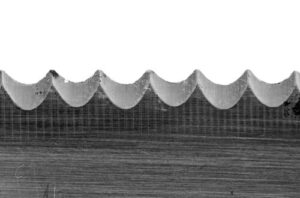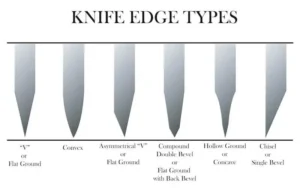Best gift ideas for men and women for 2023 free shipping.
Great gift ideas for men and women 2022. Block knife sharpener are a new patent handheld knife sharpener that is quick and simple to use. Have no fear of losing knifes original cutting edges. or what’s already on it, you can only make blades sharper.
Why does a Block sharpener make a great gift idea for men and women? We all use knives in our daily activates. When we push a blade to cut, we apply force. But not an equal force produces equal pressure. Pressure is force applied over a given area, and it is pressure at the cutting surface that makes the difference. If you cut with a sharp blade and a blunt blade, using the same force with each. The sharp blade has a much smaller surface area than the blunt blade. This results in the sharp blade translating that force into more pressure at the cutting surface, and therefore an easier cut. Or to put it another way. You need more force for the blunt blade to give you the same pressure at the cutting surface. A sharpener knife is much easier to work with and gives you more control. Block sharpeners are the Best American made knife sharpener for sale online today. They make’s a great gift idea for outdoorsmen and women and chefs. for 2023.
Block sharpeners are new patent sharpeners made to reline and hone blades.
The Block family are the Original Manufacturers of these style Knife Sharpeners est.1969. ((Aka; Butcher Block sharpener & later years Easy sharpener.) Don’t be fooled by look Alike’s, they do not work the same. Block sharpeners are a patent sharpener made to reline and hone blades back to their original cutting edges. With Blocks patent flex design in the handle design this enables the honing rods to adjust to many different types of cutting edges.

Knife Edge Styles
- V-edge the V-edge is the most common style for kitchen knives. …
- Double bevel or Compound Edge A double beveled edge, also known as a compound edge, is essentially a double-layered V-edge. …
- Chisel edge Chisel edges are most commonly found on Japanese sushi knives like Santokus and Nakiris. …
Knife Edge Styles

Every knife blade is ground uniquely to form a sharpened edge. Each side of the blade that has honed an edge is referred to as a bevel. If you look closely at the blade of your kitchen knives, you should notice a part at the very edge that angles more steeply–this is the bevel.
Kitchen knives are easily one of the most commonly used tools on the planet. They are simple yet used for a variety of culinary tasks daily. But the very cutting edge that we rely on — and the source of the knife’s power–is nearly invisible to the unaided eye, a reason why we seem to take these trusty instruments for granted.
The majority of kitchen knives are flat ground, meaning the blade begins to taper from the spine to the edge. However, knife edges come in a variety of styles and differences in the way the blade is ground to make it sharp. If you look closely at the blade of your kitchen knives, you should notice a part at the very edge that angles more steeply–this is the primary bevel. Most of the time people refer to the Edge Angle—see the image below. Typically, this is about 15º to 25º for kitchen knives.
Cutting edges that you can sharpen with a Block sharpener.
V-edge-

The V-edge is the most common style for kitchen knives. Like the letter V, these blades slant directly from the spine to the edge at a symmetric angle.
V-edges are the preferred design for most kitchen knife makers as they are easy to sharpen and hold their edge longer, though durability is sacrificed in favor of a fine edge.
Double bevel or Compound Edge
A double beveled edge, also known as a compound edge, is essentially a double-layered V-edge. Picture a large V with a smaller V on top of it. This is my favorite overall. It’s sharp and durable.
The secondary bevel, also known as a relief angle, serves to make the metal behind the edge thinner. In principle, a thinner-edged blade has a greater cutting ability given its lack of friction—but it is also more likely to sustain damage.
The idea behind a double bevel is to make the edge stronger and more resistant to rolling and cracking with the support of the secondary bevel.
A couple of Chef’s Choice knife sharpeners work this way—The M1520 and the M120 for example.
Chisel edge
Chisel edges are most commonly found on Japanese sushi knives like Santokus and Nakiris.
These blades are only ground on one side to form a single primary bevel, while the other side is left straight and flat. For this reason, chisel edge knives can be found in both left-handed and right-handed varieties.
The edge is usually sharpened between 20º and 25º, which comprises the total angle of the edge (the flat side has an angle of 0). Such an acute angle makes chisel edges exceptionally thin and sharp compared to most American and European knives.
This design makes chisel edge knives the preferred style for cutting delicate raw fish in sushi restaurants.
Convex edge
Convex edge blades feature two outward arcs that slope in and intersect at the edge. The resulting look of the edge resembles the slope of an airplane wing.
The curved design puts more steel behind the edge, making it stronger and sharper than V-edged blades.
Since the creation of a convex edge is a bit more sophisticated than others, they can be more difficult to sharpen effectively with home sharpeners. Because of this, convex edges often lose their shape and are eventually shaved down to V-edges.
Hollow edge
Hollow edge blades, also known as concave edges, curve inward–the opposite direction of convex edges.
These blades can get very sharp, but the limited steel supporting the edge makes them more susceptible to damage. Hollow edges are usually reserved for hunting and survival knives.
Some bargain-brand butcher knives may employ a hollow edge, but most quality kitchen sets will feature a stronger V-edge.
Serrated edge 
You will find with our unique flex design in our sharpener handle you can sharpen many different types of cutting edges. Like all V -shaped edges form 16 Degrees threw 28 Degrees, Convent edges, Serrated edges, Scissor edges and odd shaped blades like found on Snake shaped Daggers or hawkbill work knife.
Like chisel edges, serrated-edged blades are ground on only one side. The distinguishing features of serrated edges are the mini-arches, or teeth, that serve to protect the actual cutting surface and keep the edge sharp. block sharpener will sharpen any serrated edge knife.

